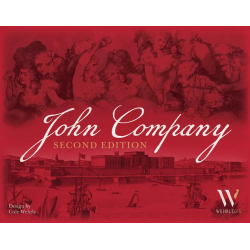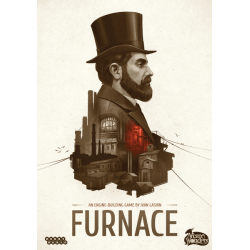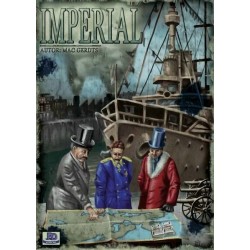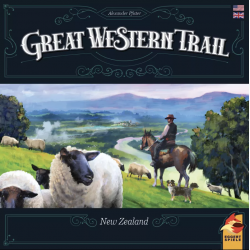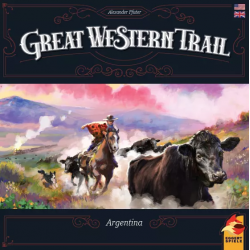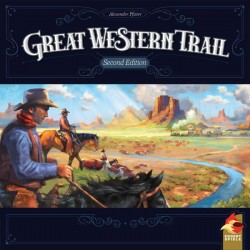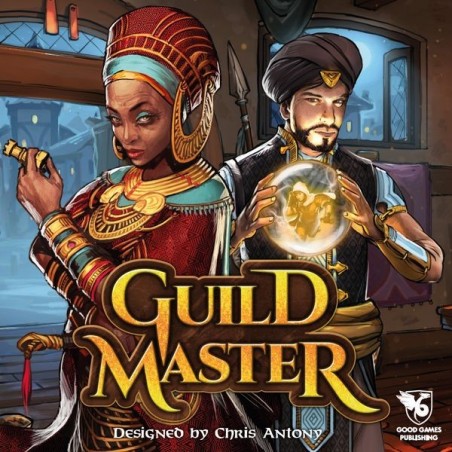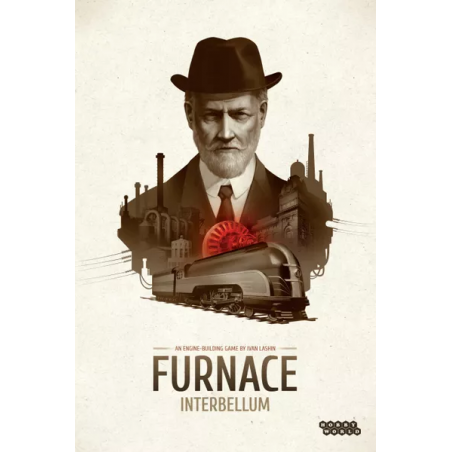No products in the cart.
Active filters
Great Western Trail: El Paso
El Paso at the end of the 19th century: Five railroad companies have connected the Sun City to their network and made it a major hub for the cattle trade. Ranchers from the surrounding parts of Texas and Mexico drive their cattle into the city to send them on their long journey to the north, east, and west of the United States.
Crossing Oceans
Towards the end of the 19th Century, ever larger and faster ocean liners revolutionized the growing maritime traffic. Daring shipping companies opened steamship lines to the most important ports worldwide. Modern steel juggernauts replaced traditional sailing ships and competed intensely for dominance on the major shipping routes.
John Company: Second Edition
In John Company, players assume the roles of ambitious families attempting to use the British East India Company for personal gain. The game begins in the early eighteenth-century, when the Company has a weak foothold on the subcontinent. Over the course of the game, the Company might grow into the most powerful and insidious corporation in the world or collapse under the weight of its own ambition.
Bohnanza
Bohnanza is the first in the Bohnanza family of games. The cards are colorful depictions of beans in various descriptive poses, and the object is to make coins by planting fields (sets) of these beans and then harvesting them. To help players match their cards up, the game features extensive trading and deal making.
Furnace
Furnace is an elegant engine-building euro game where the players take on the roles of 19th-century capitalists building their industrial corporations and aspiring to make as much money as they can by purchasing companies, extracting resources, and processing them in the best combinations possible.
Imperial
Each player represents an international investor. The players attempt to increase their capital and gaining influence in the most powerful European nations.
Guild Master
Trouble is on the rise. And for adventuring guilds this spells opportunity.
Zoo Vadis
What if the animals were the ones who ran the zoo?
…Presumably, this wild government would be built upon the support of fellow creatures and fueled by the fame, attention, and prestige of wide-eyed visitors. Naturally, the most aspirational beasts would lobby for a position in the star exhibit, and the lead star would be elected Zoo Mascot.
In order to join the star exhibit, each species must campaign its way up the hierarchy of enclosures with the majority support of animal voters. And the lead star will be the species that has earned the most laurels from both raving fans and jealous rivals along the way.
Great Western Trail: New Zealand
In Great Western Trail: New Zealand, you are a runholder — that is, the owner of a sheep station — on the South Island of New Zealand at the end of the 19th century. Recent years have seen your family farm prosper by diversifying your breeds of sheep and by increasing the value of your wool.
With the dawn of the new century, new challenges have arisen. You must acquire new and improved breeds of sheep to ensure the prosperity of your family business and the laborers who work for you.
Le Havre
Manage a shipping company in the port of Le Havre in this weighty economic strategy game! Balance investments in goods and ships while taking care to feed your workers.
High Frontier 4 All
This is the 4th ed of Phil Eklund\'s signature game High Frontier. It started with Rocket Flight (1999), a game with the vision to let "Each player start as a spacefaring company in the year 2020 trying to make a profit in trade and technology development." Now that we are at that year, High Frontier has evolved into a modular system open to enthusiasts to keep it updated ever farther into the future.
Furnace: Interbellum
Furnace expands into the twenties and thirties of the twentieth century — the interwar period known as the interbellum. In this expansion, you will find new Company cards and Capitalists, new abilities, Manager tokens, variable Capital discs, a set of components for a fifth player, and new Agents for two-player and single-player games. All of this exists within beautiful industrial buildings and structures from the epoch of Art Deco, Constructivism, and Bauhaus.
Pax Pamir: Second Edition
In Pax Pamir, players assume the role of nineteenth century Afghan leaders attempting to forge a new state after the collapse of the Durrani Empire. Western histories often call this period "The Great Game" because of the role played by the Europeans who attempted to use central Asia as a theater for their own rivalries. In this game, those empires are viewed strictly from the perspective of the Afghans who sought to manipulate the interloping ferengi (foreigners) for their own purposes.
Great Western Trail: Argentina
In Great Western Trail: Argentina, you own a vast estancia in Argentina at the end of the 19th century, and you will need to travel the plains of the Pampas with your cattle to deliver them to the main train station in Buenos Aires.
Troyes
In Troyes (pronounced "twah"), players recreate four centuries of history of this famous city of the Champagne region of France. Each player manages their segment of the population (represented by a horde of dice) and their hand of cards, which represent the three primary domains of the city: religious, military, and civil. Players can also offer cash to their opponents\' populace in order to get a little moonlighting out of them — anything for more fame!
Great Western Trail (2nd Edition)
America in the 19th century: You are a rancher and repeatedly herd your cattle from Texas to Kansas City, where you send them off by train. This earns you money and victory points. Needless to say, each time you arrive in Kansas City, you want to have your most valuable cattle in tow. However, the "Great Western Trail" not only requires that you keep your herd in good shape, but also that you wisely use the various buildings along the trail. Also, it might be a good idea to hire capable staff: cowboys to improve your herd, craftsmen to build your very own buildings, or engineers for the important railroad line.



